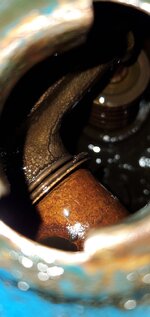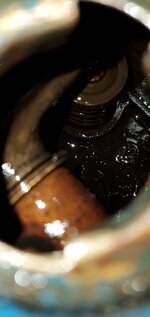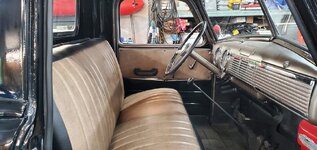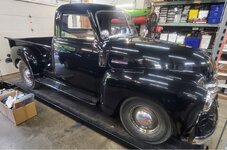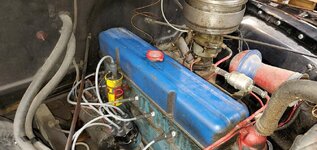I recently acquired a 1948 Chevy 3100 pickup truck. It was originally equipped with the 216 Stovebolt inline 6 engine but spent many years getting worked hard on a farm. At some point, the farmer removed the original 216 engine and replaced it with a 1954 Chevrolet passenger car 235 inline 6.
I suspect the 235 had been rebuilt at some point prior to the previous owner (to me) purchasing the vehicle 10 years ago. The engine block and head have been painted a non-factory color, and it carries very high oil pressure (30-50 psi, depending on RPM and temperature). It is also very quiet, mechanically, and burns almost no oil.
The previous owner to me (who purchased this truck 10 years ago) ran nothing but non-detergent SAE 30 oil in it while he owned it - believing that the truck still had the stock 216 in it. He put at least 6000 miles on it, with an unknown number of miles being on the truck and 235 engine previous to him purchasing it from the farmer.
I've heard horror stories about switching to detergent motor oil in old engines because it can loosen sludge that can plug up oil passages. However, as I stated, this engine has been rebuilt at some point. I inserted a bore scope camera into the oil pan thru the drain plug but could not determine if there was any sludge laying in the bottom of the oil pan due to inadequate lighting.
The question is: would it be safe to use a modern detergent motor oil in this engine at this point? I will, of course, be adding the recommended amount of Zinc/ZDDP due to the presence of a flat tappet camshaft.
I suspect the 235 had been rebuilt at some point prior to the previous owner (to me) purchasing the vehicle 10 years ago. The engine block and head have been painted a non-factory color, and it carries very high oil pressure (30-50 psi, depending on RPM and temperature). It is also very quiet, mechanically, and burns almost no oil.
The previous owner to me (who purchased this truck 10 years ago) ran nothing but non-detergent SAE 30 oil in it while he owned it - believing that the truck still had the stock 216 in it. He put at least 6000 miles on it, with an unknown number of miles being on the truck and 235 engine previous to him purchasing it from the farmer.
I've heard horror stories about switching to detergent motor oil in old engines because it can loosen sludge that can plug up oil passages. However, as I stated, this engine has been rebuilt at some point. I inserted a bore scope camera into the oil pan thru the drain plug but could not determine if there was any sludge laying in the bottom of the oil pan due to inadequate lighting.
The question is: would it be safe to use a modern detergent motor oil in this engine at this point? I will, of course, be adding the recommended amount of Zinc/ZDDP due to the presence of a flat tappet camshaft.


